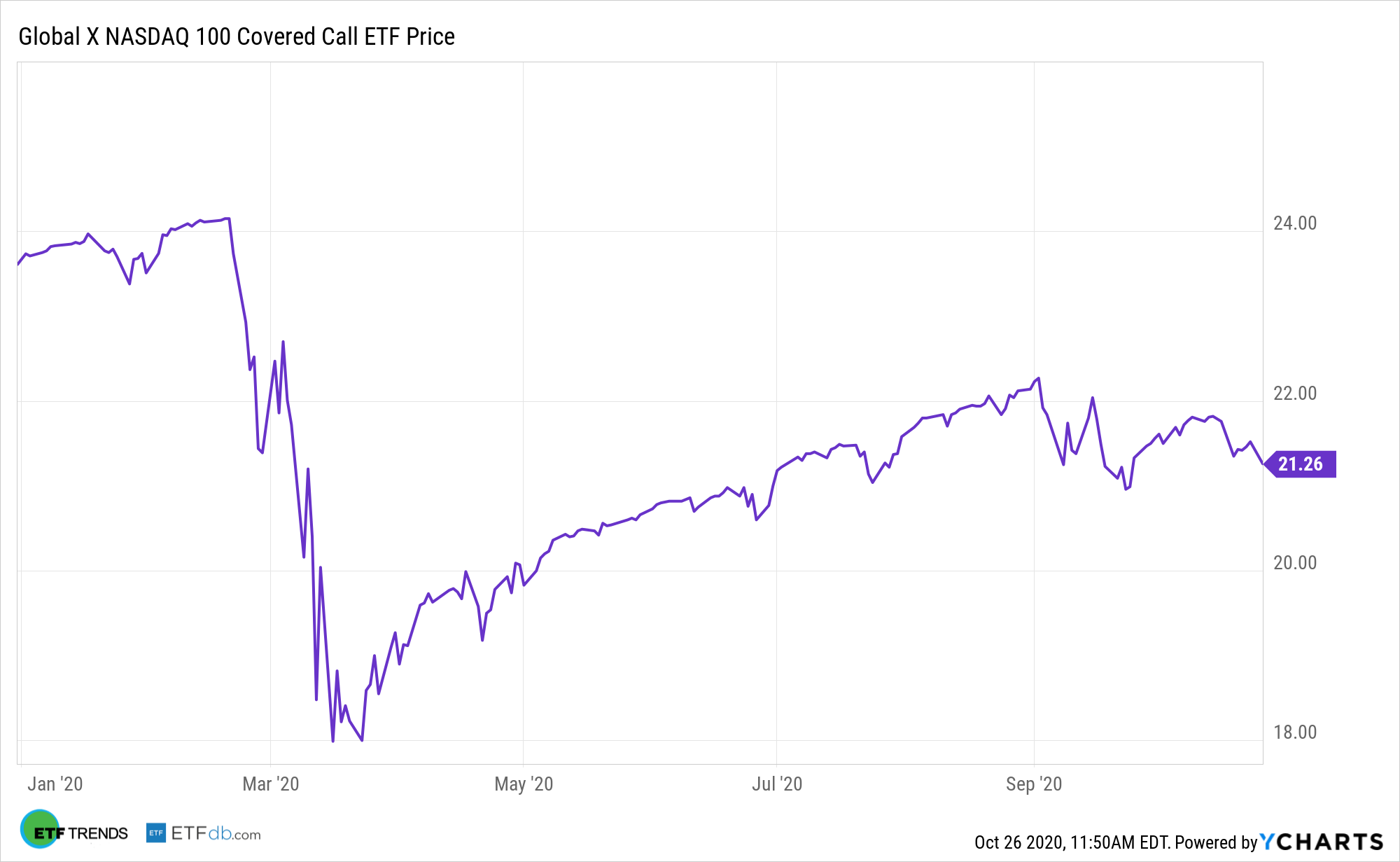Fixed income investors understand how difficult it is trying to squeeze out as much income as possible via safe haven options like government debt. Fortunately, there are exchange-traded funds (ETFs) that offer strategic exposure to other income-generating sources like covered calls via the Global X Nasdaq 100 Covered Call ETF (QYLD).

The fund follows a ‘covered call’ or ‘buy-write’ strategy, in which the QYLD buys the stocks in the Nasdaq 100 Index and “writes” or “sells” corresponding call options on the same index. Summarily, QYLD seeks to provide investment results that correspond generally to the price and yield performance, before fees and expenses, of the CBOE Nasdaq-100 BuyWrite V2 Index.
QYLD in essence offers investors:
- High Income Potential: QYLD seeks to generate income through covered call writing, which historically produces higher yields in periods of volatility.
- Monthly Distributions: QYLD has made monthly distributions 6 years running.
- Efficient Options Execution: QYLD writes call options on the Nasdaq-100 Index, saving investors the time and potential expense of doing so individually.
Of course, with QYLD, ETF investors get exposure to a covered call strategy without having to take on individual positions of their own. As such, covered calls are certainly not for the novice investor, so a quick primer will help, courtesy of financial education site Investopedia:
“A covered call refers to a financial transaction in which the investor selling call options owns an equivalent amount of the underlying security,” an Investopedia article explained. “To execute this an investor holding a long position in an asset then writes (sells) call options on that same asset to generate an income stream. The investor’s long position in the asset is the ‘cover’ because it means the seller can deliver the shares if the buyer of the call option chooses to exercise. If the investor simultaneously buys stock and writes call options against that stock position, it is known as a ‘buy-write’ transaction.”
“Simply put, if an investor intends to hold the underlying stock for a long time but does not expect an appreciable price increase in the near term then they can generate income (premiums) for their account while they wait out the lull,” the article explained further. “A covered call serves as a short-term hedge on a long stock position and allows investors to earn income via the premium received for writing the option. However, the investor forfeits stock gains if the price moves above the option’s strike price.”
For more market trends, visit ETF Trends.

